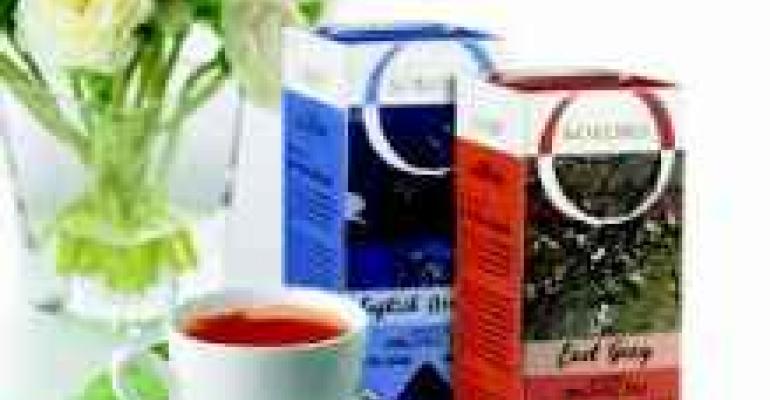 |
| TEA TIME: Customers are increasingly thirsty for organic, herbal and specialty teas to complement their meals. |
Some 4,700 years ago, the Chinese emperor Shen Nung was boiling water when leaves from a nearby camellia sinensis plant-now known as the black tea shrub-landed in the open pot. Intrigued by the brew's aroma, the emperor drank the mixture and declared that it gave vigor to the body, lent contentment to the mind and instilled determination of purpose.
Fast-forward a half dozen centuries and tea is a commodity growing in demand. While now trailing coffee and iced tea in popularity, it is still solidly entrenched in the American cultural fabric, and as such, thought should be given to how well you meet the needs of your tea-sipping guests.
The continuing problem for restaurateurs regarding their service of tea is that staffers are likely not tea drinkers themselves and therefore not familiar with how to properly serve it. As opposed to coffee service, with which most Americans are well acquainted, tea rituals and requirements elude all but the most experienced of servers.
Catering to tea-consuming guests begins with a balanced offering of tea styles with which to satisfy even the most discriminating of palates. Black tea is the most popular type of tea in the United States. Each variety has a distinctive flavor. For example, Assam is a black tea from India with a full-body and pronounced, malty palate, while Darjeeling comes from India and has a delicate taste. Darjeeling tea is prized for its quality, which is reflected in its price. Orange Spice is black tea with small pieces of orange peel, cinnamon and cloves.
Several varieties of black teas are used to create now famous combinations of various Indian teas. Earl Grey is a popular blend comprised of three varieties of black tea flavored with oil of bergamot.
Green tea-also known as China tea-is not allowed to ferment before drying, which permits it to retain much of its natural taste, color and aroma. Green tea is often served as a single variety and not blended with other teas. Gunpowder is widely considered the highest quality of Chinese green tea. It has small, tightly rolled leaves and a subtle aroma and flavor.
Oolong tea, which is also referred to as red tea, is allowed to partially ferment prior to drying. Most oolong teas have delicate, fruity flavors and floral bouquets. Jasmine tea is made from a blend of green and oolong with fresh jasmine blossoms.This tea has a flowery aroma and a fresh, mild flavor.
Herbal tea consists of the dried flowers and leaves of plants other than camellia sinensis. Herbal teas can also be made using fresh flowers, herbs, seeds, fruit, or various spices. They are typically caffeine-free.
Brewing World Class Tea
You don't need to be hosting a high tea to need to know how to properly serve tea. While brewing is a relatively straightforward process, there are a few pointers that if heeded will spell the difference between a marvelous cup of tea and a tepid, flavorless mess.
Water Quality. A cup of tea can only be as good as the water used to make it. Therefore, spring water or bottled drinking water will yield the best results. Start with cold water and bring to a rolling boil. When making green tea, the water should be just off the boil. Typically one teaspoon of loose tea, or one teabag, is used per 6 ounces of water.
Preparation Techniques. Always pre-heat the teapot with hot water and let stand for a minute before use. Since tea bags contain finely chopped tea, it requires a short brewing time to attain the proper degree of extraction. To prevent tea from becoming bitter, always remove the tea bags or loose tea immediately after brewing. Never allow prepared tea to boil.
Service Techniques. Always serve tea immediately after preparation. This will ensure that it will be sufficiently hot and at its freshest. When pouring steaming hot tea into a delicate china or porcelainteacup, place a spoon in the cup to prevent cracking.
Robert Plotkin is the past president of the National Bar & Restaurant Association and author of numerous books including The Original Guide to Alcohol-Free Beverages and Drinks.





